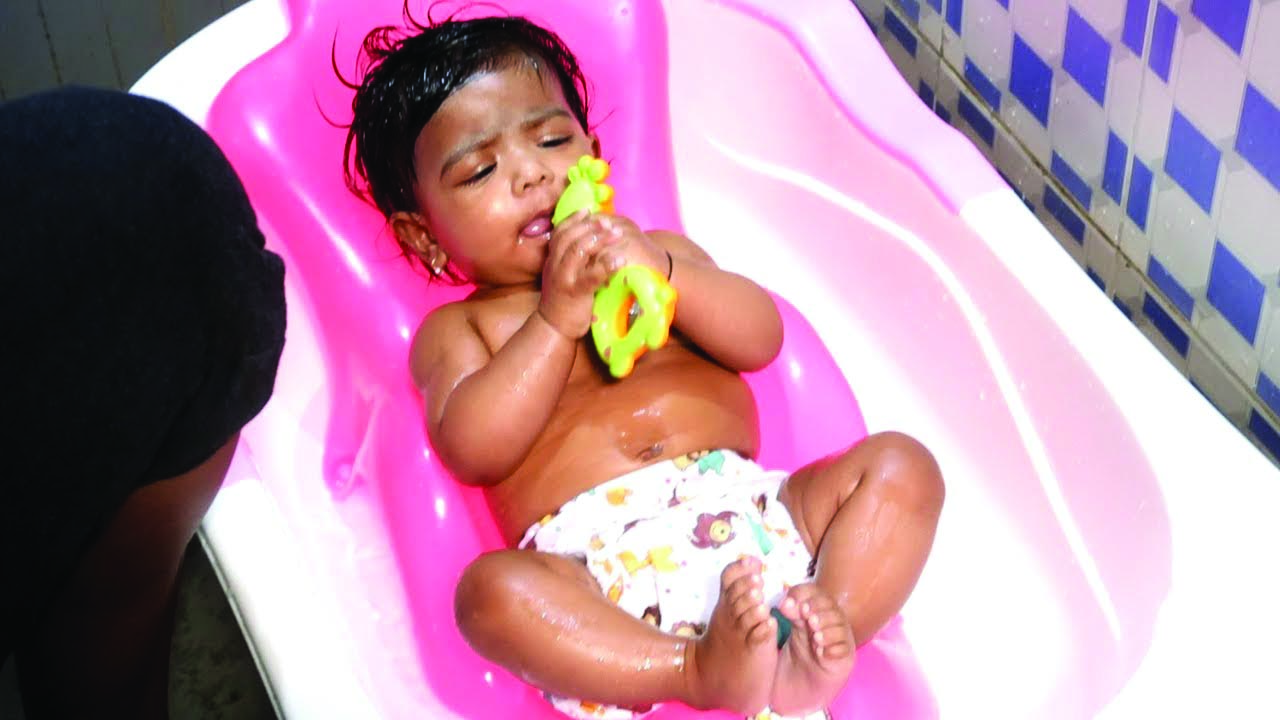Getting this simple yet essential infant care routine is important because a good bath ensures newborns sleep soundly and are clean and energetic, writes Anita Bennet

New moms are flooded with a plethora of advice on infant care and nurturance. Popular on the list of infant do’s and don’ts is the all-important bathing routine. Getting this simple yet essential infant care routine is important because a good bath ensures newborns sleep soundly and are clean and energetic. Though all newborns don’t particularly enjoy baths, as they get older they take to it. The bathing ritual also enables parent-child bonding.
Contrary to popular opinion, it is not necessary to bathe infants in the morning. Different times work for different situations. If the weather is chilly, after the morning sun is out is a good time. In hot and humid weather, evening baths are advisable as it will help infants sleep well at night. Also if your infant is very active and tends to get dirty during the day, an evening bath makes more sense. Depending on local weather conditions, you could alternate between sponge and tub baths. Here is a practical guide to giving your infant a soothing, healthy bath.
The Sponge Bath
This doesn’t need elaborate preparation rituals and is fuss free. During the first two months, you can give your newborn daily sponge baths and the occasional tub bath.
You need
• 3 towels or washcloths
• Warm water
• Hooded towel (to wrap her up)
• Cottonwool balls
Getting ready
• Select a room in the house which is free of cold drafts. A sunny room with a clean mat/towel spread on the floor/bed is ideal.
• Keep the washcloths, towel and cottonwool balls ready.
• Lay the infant down on the floor/bed comfortably. Undress and unswathe the baby’s lower body for more comfort.
• Set out her clothes and massage towel and oil if you intend to give her a massage before or after the bath.
Sponging
• Soak a towel in warm water and squeeze.
• Start sponging the infant’s upper body and hands. Then, move to the legs and feet. Make sure you wipe the body creases (under arms, elbow and knees etc) where oily secretions tend to collect.
• Next turn her over and sponge her back.
• Take a new washcloth for the groin area. Wipe the genital area thoroughly followed by buttocks.
• Lastly, cleanse the face by gently wiping her eyes with cottonwool. Use separate balls for each eye.
• End by using a fresh washcloth to wipe her face with gentle movements. Wipe behind the ears, neck creases and ear crevices.
After sponging
• Wrap the infant in a towel and pat dry.
• If the infant has dry skin, moisturize it with baby lotion before dressing her.
• It’s not necessary to use baby powder. If you do, ensure you don’t dust it in a way that it floats in the air. It can enter children’s lungs and make breathing difficult.
The Tub Bath
The first step is to select and purchase a comfortable bath tub. They are available in various sizes and shapes. It’s advisable to buy a sturdy tub with a removable rubber mat at the bottom (to prevent slippage). If you can’t get a tub with a mat, line the tub with a thick towel before seating the toddler in it. A tub with a backrest allows the child to lean back and enjoy the splash. Also available in the market are tubs which fit into sinks and adult bathtubs.

You need
• 2 towels/washcloths
• Warm water
• Hooded towel (to wrap her in)
• Cottonwool balls
Getting ready
• Keep soap and towel ready.
• Water temperature should be lukewarm.
• Lay out the toddler’s clothes.
Tub bath
• Lower the infant gently into the bathtub.
• Throw in a floating toy for an enjoyable bathing experience.
• A bathtub with back support will leave your hands free to pour more water and soap her. Make sure your infant is not ingesting the soapy water.
• Wash one body part at a time.
• Use fresh water and washcloth to clean her face.
• Do a final rinse with clean water. Fill the tub again with warm water and allow her to have a final splash before taking her out of the tub.
After the bath
• Wrap in a towel and pat her dry.
• Moisturize her skin with baby lotion.
Infant bathing tips
• Don’t overdo the soap or shampoo.
• If your toddler doesn’t like bathing, try taking a shower together as it will ease her anxiety and fear.
• Always trim a child’s nails after a bath. They will be softer and easier to cut.
Also Read: Infant health woes
























